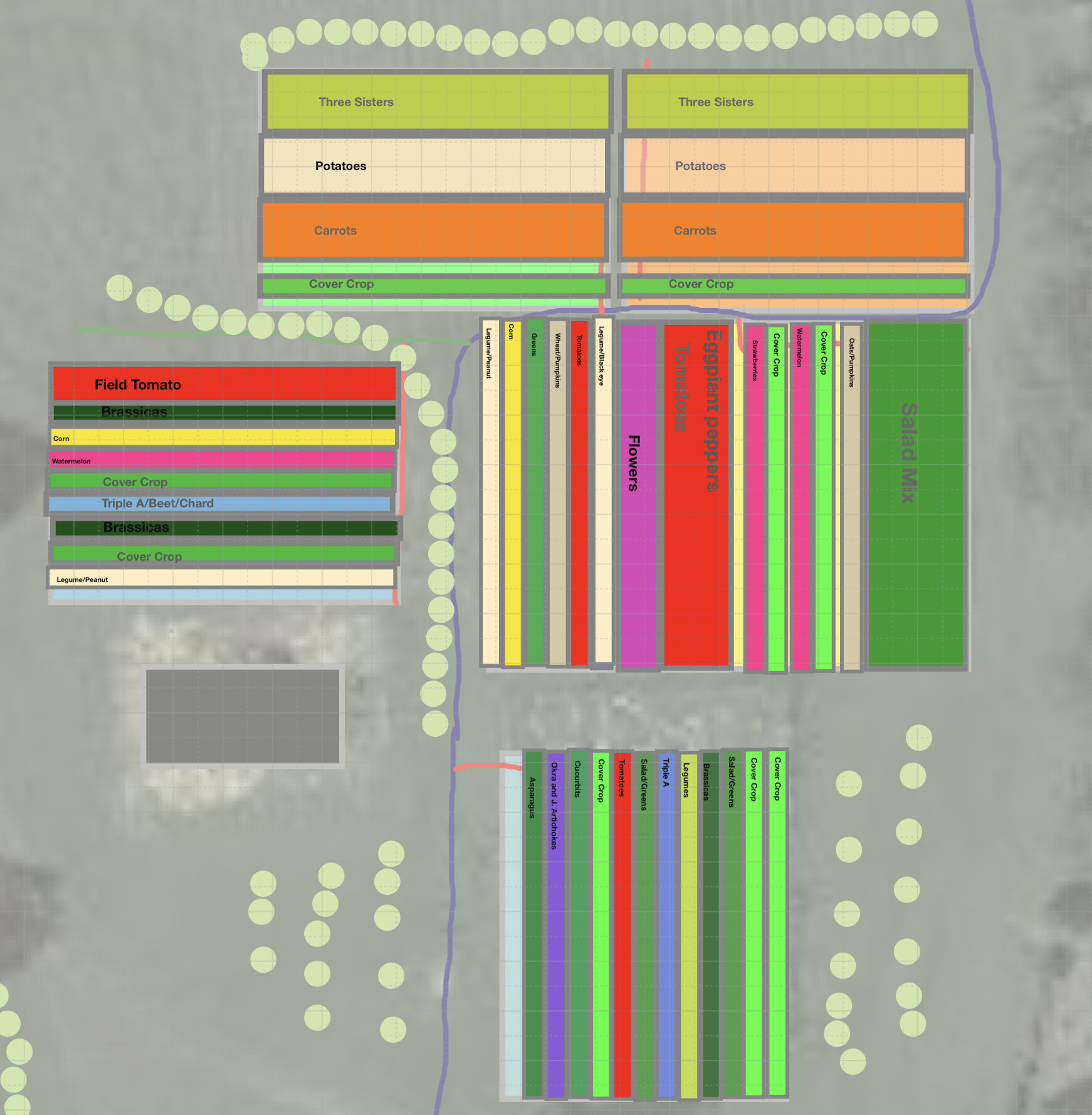Under Construction!!- I’m typing this as we speak so keep checking back (12/15/2020-1430)
Crop Plan
Year 1 Goal = Positive Cash Flow
Positive cash flow can probably be achieve on my scale at $40,000 in gross revenue. Anything extra would be great and in reality I would need to make about $60,000 to match the return on investment that I expect from other endeavors. I like to look at farming is an uncorrelated investment with an inverse relationship to overall (stock/equity) market returns. The yield is expected to be lower but should remain positive in a variety of financial climates. In my opinion, listening to farmers (Cole the Corn star), market gardeners (JM Fortier, Conor Crickmore, Curtis Stone, Diego, etc), micro green/urban farmers, ranchers (Salatin), talk about money is deceptive.
Anyone with any experience “making money” know that gross revenue is meaningless. Positive cash flow is king and really any enterprise in which you invest needs to have a positive ROI (return on investment). You can get sucked in to the shockingly similar sounding podcast of Zach Bush (food/farming) and Mike Green (investing) in terms of motivation. But, farming/investing/whatever as an enterprise (not hobby) needs to make a certain amount of money. In my mind living wages are for people in their 20s, real wages are the future of farming.
USDA Farming Statistics
My Farm is in Georgia and the closest market is Chattanooga, TN
The Average Net Cash Farm Income (NCFI) in Georgia = $64,470
The Average Net Cash Farm Income (NCFI) in Tennessee = $12,600
Note: Lies, Lies, and Statistics!!- Looking at Tennessee you will notice that the Average NCFI is only $12,600 despite TN having 28,200 more farms. Georgia also received $1,043,776,397 MORE in government payments/federal indemnities than Tennessee (which farms 600,000 more acres)! You see an interesting trend from these numbers in that TN farmers Top 3 agricultural products (Corn, Beans, Cattle) are different than Georgia (Broilers, Cotton, Eggs). From the numbers alone it looks like TN farmers are being penalized for the corn and beans and Georgia may be taking the money NOT to take these principle commodity crops to market.
“Farm businesses are farms that have annual gross cash farm income of at least $350,000 or smaller operations where farming is reported as the operator’s primary occupation. Average net cash farm income (NCFI) for farm businesses* is forecast at $104,500 in nominal terms in 2020, up 32.6 percent from 2019. Higher NCFI means more cash could be available to pay down debt, pay taxes, cover family living expenses, and invest. NCFI is not a comprehensive measure of profitability, however, because it does not account for changes in noncash income, including adjustments in farm inventory, accounts payable, accounts receivable, the imputed rental value of operator dwellings, and capital consumption.”
Each industry has a metric for evaluating projected revenue:
Medicine- work relative value units = if you do this amount of work (surgery/office visits, procedures) this year then you will make this amount of money
Real estate- cap rate, cash on cash return, total return on equity = if you invest this amount of money, in this property, at this interest rate, then you will make this amount of money
Hourly employee- if I work this number hours then I will make this amount of money
Stock/bond/options market- if I invest this amount of money then I “hope” to make this return
Farming- if I invest this amount of time and money (seed, land, animals, infrastructure) then I “hope” to make this return
Every industry has it’s own uncertainty. 2020 taught us that anything can happen. So how do you create a crop plan to hit your goals?
Here is my attempt:
Goals
Create multiple revenue streams Year One
Positive cash flow Year One (minus infrastructure and equipment cost). I’m trying to keep things positive this year!! My off farm job paid for all the materials YTD and now I need to prove to myself that I can create a plan that at a minimum will pay for labor and operational cost.
Keep it Simple, Refine the revenue streams, and don’t get over extended
Overview:
Farm layout- big picture plan of where everything is going to go.
Google Sheets/Excel- plan
Tend.com- probably not necessary but a nice record keeping tool
Step 1
Farm Layout
I’ve spent YEARS walking around my farm. I try to visualize what the farm will look like in 10 years. What is the land telling me and where does it want to go. I have rental properties, have built houses, and have realized that certain individuals have a talent for their ability to create space. This takes practice and don’t be discouraged by your first draft. I love using a piece of paper and crayons. The best option on the iPAD is to use an app like ArchiSketch. This lets you draw your farm plan to scale!! Use layers for fences, water, field plots, expansion plots, and infrastructure. See my drawing below.
Step 2
This then allowed me to take an excel plan, visualize it, and then saved me a ton of time while inputting the plan in to Tend. Tend then allowed me to get the specifics and generate revenue projections.
SurgEnduro Crop Plan Google Sheet
This google sheet crop plan is just to provide you with some general idea of an excel type plan. JM Fortier in his course has a different looking spreadsheet; many farmers uses columns as weeks and have each row shaded for the DTM. Needless to say there is no right or wrong way to make a plan just make it Antifragile. Make the plan so that it gets better with change and prevails (grows!) with adversity.
Step 3
Input the plan in to Tend/Trello/print it out. Do something to get everyone on the same page for the upcoming season.
Tend is definitely the most robust system I have found that provides the most data.

